
Unveiling Kandy's Historical Significance: The UNESCO Signage
Explore Kandy's UNESCO Signage and uncover the rich history of Sri Lanka's last royal capital, a must-visit for every traveler.
Discover the rich cultural heritage of Kandy through its UNESCO signage, a must-visit for history enthusiasts and travelers alike. These informative panels highlight the significance of Kandy, once the capital of the last kingdom of Sri Lanka. As you explore, you'll delve into the stories of the last king, Sri Wikrama Rajasinha, and the pivotal role this city played in the island's history. Enjoy a stroll through the area while absorbing invaluable insights into Kandy's legacy.
A brief summary to Kandy Unesco Signage
- 7JVQ+GXC, Kandy, LK
Local tips
- Visit early in the morning or late afternoon to avoid crowds and enjoy cooler temperatures.
- Take your time reading the signage to fully appreciate the historical context and significance of Kandy.
- Combine your visit with a tour of the nearby Temple of the Tooth for a comprehensive cultural experience.
- Bring a camera; the area around the signage offers fantastic views for photography.
Getting There
-
Car
If you are driving, start from Kandy city center and head towards the Kandy Lake. Take the road leading towards the Kandy Museum. Continue on the road until you reach the roundabout near the Kandy Clock Tower. From the roundabout, take the first exit onto Peradeniya Road (A1). Continue on this road for approximately 2 kilometers. Look for the signage indicating the Kandy UNESCO site, which will be on your right at the coordinates 7.2938005, 80.6398924.
-
Public Transportation
To reach the Kandy UNESCO Signage using public transport, head to the Kandy bus station and find a bus heading towards Peradeniya. The fare is typically around 30 LKR. After about 15 minutes, get off at the Kandy Museum stop. From there, walk towards the Kandy Lake and continue straight until you reach the roundabout. At the roundabout, take the first exit onto Peradeniya Road (A1) and walk for about 500 meters. The UNESCO signage will be on your right at the coordinates 7.2938005, 80.6398924.
-
Tuk-Tuk
For a more localized travel experience, you can hire a tuk-tuk from anywhere in Kandy. Negotiate a fare, which should be around 200-300 LKR depending on your starting point. The tuk-tuk driver will take you directly to the Kandy UNESCO Signage. Make sure to provide them with the coordinates 7.2938005, 80.6398924 for accurate navigation.
Discover more about Kandy Unesco Signage
Iconic landmarks you can’t miss
Northern Kandy Lakeside View
0.1 km
Discover the breathtaking Northern Kandy Lakeside View, where tranquility meets stunning landscapes in the heart of Sri Lanka's cultural capital.

Ulpen Geya
0.2 km
Explore the historical significance of Ulpen Geya in Kandy, a captivating landmark showcasing Sri Lanka's rich heritage and architectural beauty.

Queens Junction
0.2 km
Explore the vibrant market of Queens Junction in Kandy, a cultural hub with local delicacies, shops, and scenic attractions nearby.
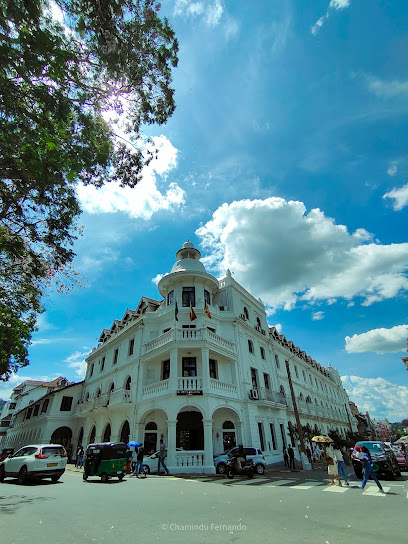
Mampitiya Walawwa
0.3 km
Explore Mampitiya Walawwa in Kandy, a historical landmark that embodies Sri Lanka's rich cultural heritage and architectural elegance.

Kandy City Centre
0.4 km
Explore Kandy City Centre, the vibrant shopping mall offering a fusion of local culture, international brands, and delightful dining in Kandy, Sri Lanka.

Torrington Park Kandy
0.5 km
Explore the natural beauty and tranquility of Torrington Park, Kandy – a perfect retreat for relaxation and cultural experiences.

Lt. Gen. Denzil Kobbekaduwa Statue
0.6 km
Explore the solemn beauty of the Lt. Gen. Denzil Kobbekaduwa Statue in Kandy, a powerful memorial celebrating Sri Lankan valor and sacrifice.

Kandy Municipal Central Market
0.6 km
Discover the vibrant Kandy Municipal Central Market, where local culture, fresh produce, and unique souvenirs await your exploration.

Kandy Tourist Information Center
0.6 km
Discover Kandy's rich history and breathtaking landscapes at the Tourist Information Center, your ultimate guide to exploring Sri Lanka's Hill Capital.

මල් වියන Mal Viyana
0.7 km
Explore the vibrant Mal Viyana in Kandy, Sri Lanka – a captivating blend of culture, history, and local flavors waiting to be discovered.

මල් වියන (Green Curve)
0.7 km
Explore the tranquil beauty of Green Curve in Kandy, a serene retreat offering lush landscapes and breathtaking views for every traveler.

KING OF KANDY
0.7 km
Discover unparalleled hospitality and comfort at King of Kandy, your ideal guest house for exploring the cultural heart of Sri Lanka.

Alagalla
0.8 km
Discover the breathtaking hiking trails of Alagalla in Kandy, where nature's beauty takes center stage amidst lush hills and panoramic views.
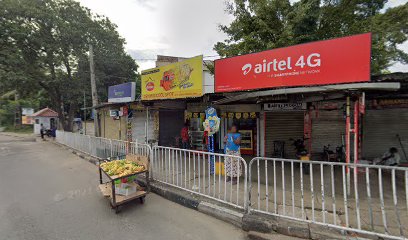
Bogambara Bus Stand - Kandy
0.8 km
Explore Kandy's vibrant transportation hub, Bogambara Bus Stand, connecting you to unforgettable destinations across Sri Lanka.

Katukele Pillaiar kovil
0.8 km
Explore the spiritual heart of Kandy at Katukele Pillaiar Kovil, a breathtaking Hindu temple showcasing intricate artistry and cultural significance.

Unmissable attractions to see
Srī Pattini (Kannaki) Shrine
0.0 km
Experience the spiritual tranquility of Srī Pattini Shrine, a cultural gem in Kandy, Sri Lanka, dedicated to the compassionate Goddess Kannaki.

Prince of Wales Fountain
0.1 km
Explore the serene beauty of the Prince of Wales Fountain in Kandy, a memorial park that combines history, tranquility, and stunning architecture.
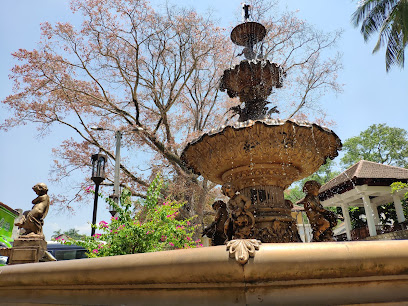
Sri Natha Devalaya - ශ්රී නාථ දේවාලය
0.1 km
Explore the serene beauty and cultural richness of Sri Natha Devalaya, a captivating Buddhist temple in the heart of Kandy, Sri Lanka.

Sacred City of Kandy
0.1 km
Explore the Sacred City of Kandy, a UNESCO World Heritage Site rich in culture, history, and natural beauty in the heart of Sri Lanka.

St Paul's Church, Kandy
0.1 km
Explore the architectural beauty and tranquil ambiance of St. Paul's Church, a historic Anglican church in Kandy, Sri Lanka.

Sri dalada maligawa Pattirippuwa
0.1 km
Explore the sacred Temple of the Tooth Relic in Kandy, a historical landmark and vibrant center of Buddhist culture.

Museum of the Tusker Rajah
0.2 km
Discover the majestic legacy of Raja, Sri Lanka's iconic tusker, at the Museum of the Tusker Rajah in Kandy.

Sri Vishnu Devala
0.2 km
Explore the spiritual heart of Kandy at Sri Vishnu Devala, a breathtaking Hindu temple filled with intricate artistry and rich cultural heritage.

Udawatta Kele
0.2 km
Explore the enchanting Udawatta Kele, a lush wildlife sanctuary in Kandy, Sri Lanka, perfect for nature lovers and history enthusiasts alike.

Sri Dalada Maligawa
0.2 km
Discover the spiritual heart of Kandy at Sri Dalada Maligawa, home to the sacred Tooth Relic of Buddha and a UNESCO World Heritage Site.

Old Royal Palace
0.2 km
Discover the rich history of Sri Lanka at the Old Royal Palace in Kandy, a museum that showcases the opulence of the last royal dynasty.

Magul Maduwa Audience Hall
0.2 km
Explore the Magul Maduwa Audience Hall in Kandy, a stunning historical landmark showcasing rich Sri Lankan heritage and exquisite architecture.

Magul maduwa .Daladamaligawa
0.2 km
Discover the serene beauty of Magul Maduwa, Kandy, a historic Buddhist temple with exquisite architecture and a tranquil atmosphere.
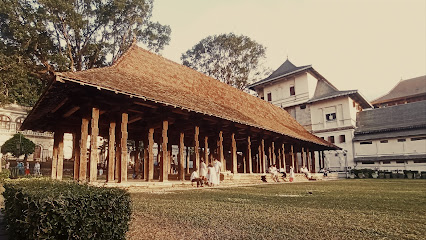
Open Air Museum - Temple of the Tooth
0.2 km
Discover the ancient wonders and cultural richness at the Open Air Museum - Temple of the Tooth in Kandy, Sri Lanka.

Sri Dalada Museum
0.2 km
Explore the spiritual heart of Sri Lanka at the Sri Dalada Museum, home to the sacred Tooth Relic and rich cultural exhibits.

Essential places to dine
The Empire Cafe
0.1 km
Experience the flavors of Sri Lanka and beyond at The Empire Cafe in Kandy - where culinary traditions meet cozy ambiance.

Cafe Nihonbashi Kandy
0.1 km
Discover authentic Japanese flavors at Cafe Nihonbashi in Kandy – where tradition meets taste in every dish.

Sri Krishna Dosai
0.2 km
Experience authentic South Indian cuisine at Sri Krishna Dosai in Kandy - where every dosa tells a story.

Balaji Dosai
0.2 km
Discover the vibrant flavors of South Indian vegetarian cuisine at Balaji Dosai in Kandy – a culinary gem that delights every palate.

La Mulberry
0.2 km
Discover La Mulberry in Kandy: A delightful fusion of Italian cuisine with health-focused options and fresh seafood in a charming setting.

Nagalingam's Bhavan - Pure Vegetarian (Jain) Indian Restaurant
0.2 km
Experience authentic Jain vegetarian cuisine at Nagalingam's Bhavan in Kandy - where tradition meets flavor in every dish.

Buono
0.3 km
Experience delightful breakfasts and artisanal coffee at Buono, Kandy's charming café known for its unique ambiance and flavorful dishes.

Cafe Aroma Inn
0.3 km
Experience culinary delights at Café Aroma Inn in Kandy - where aromatic coffee meets delightful cuisine amidst stunning views.

Sam's Restaurant and Cafe
0.3 km
Experience the best of Sri Lankan cuisine at Sam's Restaurant and Cafe - a must-visit culinary delight in Kandy.

Royal Bar & Hotel
0.3 km
Discover Kandy's cultural heart at Royal Bar & Hotel—where colonial elegance meets contemporary comfort in dining and hospitality.

Cafe Secret Alley
0.3 km
Experience the enchanting atmosphere and exquisite flavors at Cafe Secret Alley in Kandy - your perfect retreat amidst cultural exploration.

Castle Lane Cafe & Restaurant
0.3 km
Savor the best of local and international cuisine at Castle Lane Cafe & Restaurant in Kandy – an unforgettable dining experience awaits!

CAFE 1886
0.3 km
Discover authentic Sri Lankan flavors at Café 1886 in Kandy - where tradition meets modern dining.

MANDIYA
0.3 km
Experience authentic Sri Lankan flavors at Mandiya - Kandy's beloved restaurant known for its warm ambiance and delectable dishes.

Sky Lounge
0.4 km
Experience exquisite dining at Sky Lounge in Kandy, where stunning views meet delicious cuisine in a vibrant atmosphere.

Markets, malls and hidden boutiques
Crafts SHOP by House of Crafts - SRI LANKA
0.2 km
Explore the vibrant world of Sri Lankan crafts at the Crafts SHOP by House of Crafts in Kandy, your destination for unique souvenirs and handicrafts.

SPK
0.2 km
Explore SPK in Kandy for authentic Sri Lankan souvenirs and a glimpse into the island's rich artisan culture, perfect for taking home a piece of paradise.

The Kandos Shop - Kandy
0.3 km
Experience the finest handcrafted chocolates at The Kandos Shop in Kandy, where every bite is a taste of local craftsmanship and delight.
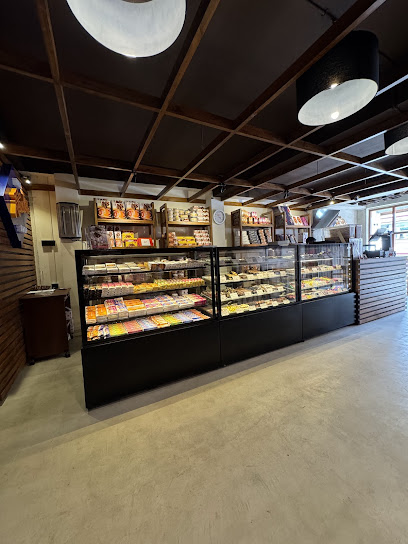
LUV SL (ODEL)
0.3 km
Discover unique fashion and authentic souvenirs at LUV SL (ODEL), Kandy's premier clothing store blending tradition with modern style.

Earthbound Creations
0.3 km
Explore authentic Sri Lankan handicrafts and eco-friendly souvenirs at Earthbound Creations in Kandy, a must-visit destination for tourists.
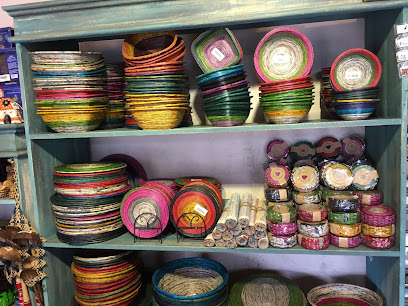
Fashion Edge
0.3 km
Discover unique fashion at Fashion Edge in Kandy, where local flair meets modern trends in a delightful shopping experience.

Vincci boutique
0.3 km
Explore Vincci Boutique in Kandy for unique fashion that blends contemporary style with local charm, perfect for stylish souvenirs.

NOLIMIT
0.3 km
Discover the latest fashion trends at NOLIMIT in Kandy City Center, your go-to destination for stylish clothing and accessories.

ODEL | Kandy City Center
0.4 km
Experience the vibrant shopping scene at ODEL in Kandy City Center, where trendy fashion meets unique Sri Lankan culture.

WaaW Online Shopping
0.4 km
Experience innovative shopping at WaaW Online Shopping in Pallekele, where technology meets tradition for a unique retail adventure.

Best one kandy
0.4 km
Explore the vibrant charm of Best One Kandy, where unique Sri Lankan gifts and artisanal treasures await every visitor.

Chenara DODGE - KANDY CITY CENTER OUTLET
0.4 km
Discover the latest trends in women's fashion at Chenara DODGE, Kandy's premier clothing destination offering a mix of modern and traditional styles.

D-Blaq - KCC
0.4 km
Discover D-Blaq - the ultimate men's clothing store in Kandy City Centre, offering stylish apparel and unique fashion pieces for every occasion.

Miniso - Kandy
0.4 km
Explore Miniso in Kandy for trendy home goods and accessories at unbeatable prices, ideal for unique souvenirs and essentials.

Galleria
0.4 km
Explore Galleria in Kandy - your ultimate destination for shopping and a taste of local culture, featuring a wide range of products and exceptional service.

Essential bars & hidden hideouts
Queens Hotel
0.2 km
Discover the charm of Kandy at Queens Hotel, your perfect gateway to Sri Lanka's rich culture and history.

Wine City
0.2 km
Experience the finest wines in the heart of Kandy at Wine City, a cozy bar perfect for relaxation and socializing.

Stag's Head Pub
0.3 km
Discover Stag's Head Pub: A cozy Kandy retreat blending local flavors and friendly vibes for an unforgettable night out.

Cargills Liquor Outlet
0.3 km
Experience the diverse flavors of wines and spirits at Cargills Liquor Outlet in Kandy, a must-visit for beverage enthusiasts.

Terrace Bar
0.4 km
Experience the vibrant atmosphere and stunning views at Terrace Bar in Kandy, a perfect retreat for tourists seeking relaxation and local culture.

THE PUB
0.4 km
Experience the vibrant nightlife of Kandy at The Pub, a lively bar with a welcoming atmosphere and an extensive drink selection.
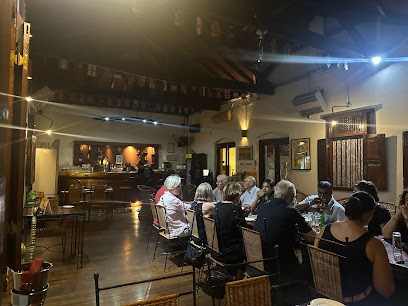
Pavana
0.6 km
Experience Kandy's vibrant nightlife at Pavana, a cozy bar known for its chilled drinks and warm ambiance, perfect for unwinding with friends.

LUCKY LIQUOR BAR
0.6 km
Discover the lively ambiance and diverse drink options at Lucky Liquor Bar in Kandy, a perfect spot for tourists to unwind and socialize.
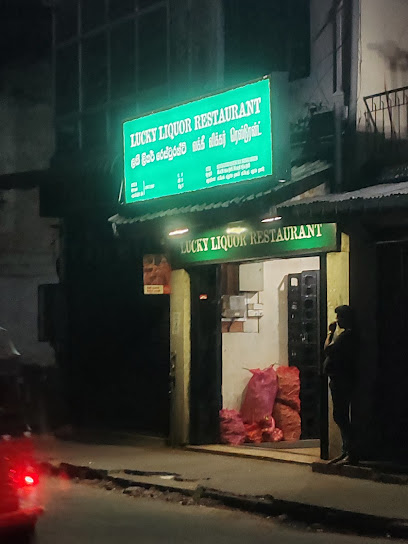
The Log Cabin
0.6 km
Experience the warmth of The Log Cabin in Kandy, where cozy ambiance and refreshing drinks meet Sri Lankan hospitality.

Bommu Rooftop Bar at Radisson Hotel Kandy
0.7 km
Discover the breathtaking views and vibrant atmosphere at Bommu Rooftop Bar, a must-visit lounge in Kandy's Radisson Hotel.

Amanda Hills
0.8 km
Discover the beauty of Kandy from Amanda Hills, a cozy hotel offering authentic Sri Lankan experiences and stunning views in the heart of the city.

Old Trinitian's Sports Club
0.8 km
Experience the vibrant atmosphere and rich history at Old Trinitian's Sports Club in Kandy, a perfect blend of local culture and leisure.

Sizzle Sports Pub
0.9 km
Experience vibrant nightlife at Sizzle Sports Pub in Kandy, featuring karaoke, sports, and delicious food in a lively atmosphere.

SkyBay Bar The Grand Kandyan Hotel
1.1 km
Experience stunning views and exquisite drinks at SkyBay Bar, a perfect oasis in the heart of Kandy for relaxation and enjoyment.

Grand Sky Lounge
1.1 km
Experience the elegance of Grand Sky Lounge in Kandy, where breathtaking views meet exquisite cocktails in a serene atmosphere.




